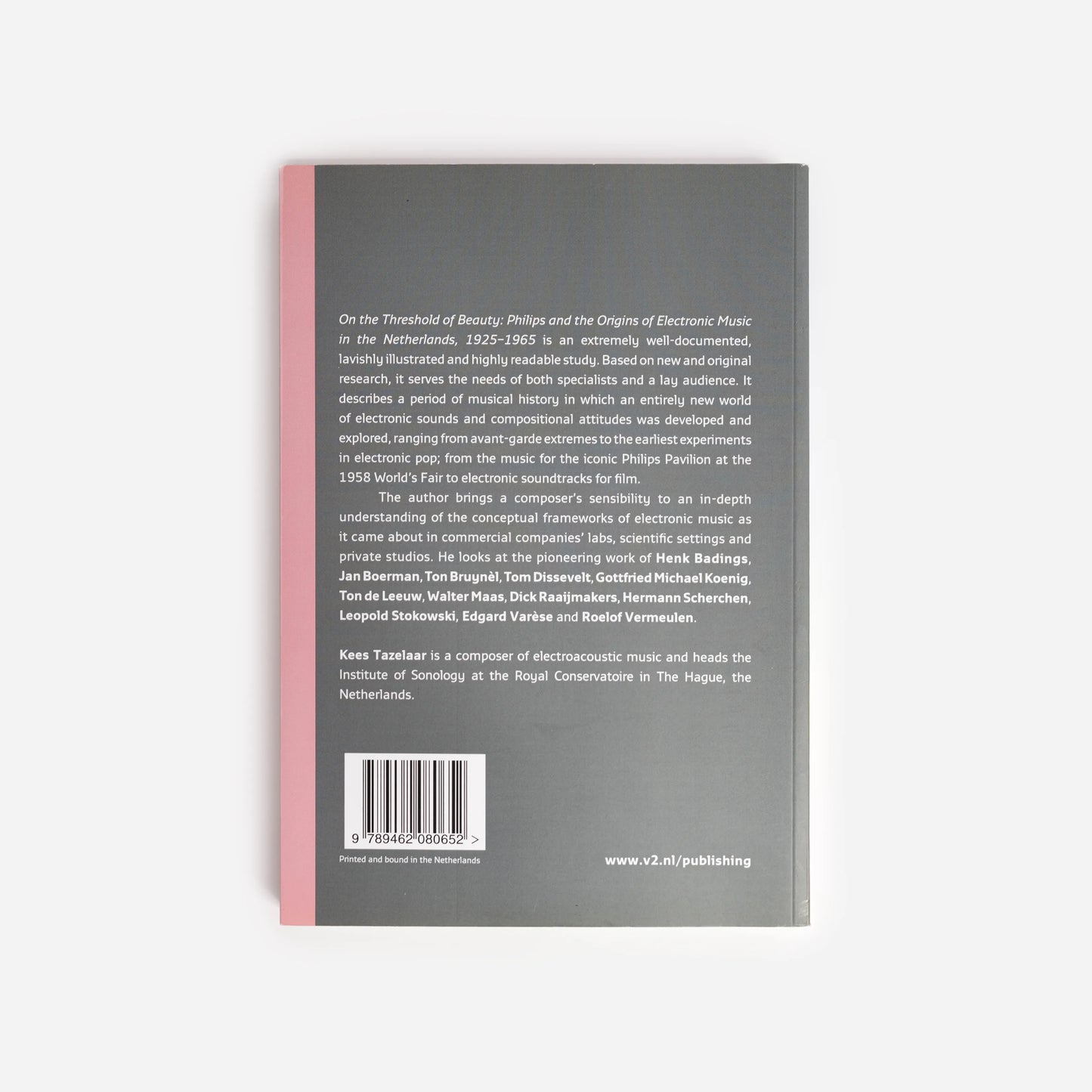On the Threshold of Beauty. Philips and the Origins of Electronic Music in the Netherlands, 1925-1965
On the Threshold of Beauty. Philips and the Origins of Electronic Music in the Netherlands, 1925-1965
Couldn't load pickup availability
Title: On the Threshold of Beauty: Philips and the Origins of Electronic
Music in the Netherlands, 1925–1965
Author: Kees Tazelaar
Issued: 2013
Genre: Monography
Language: English
Type: Paperback, full color, 230 images
Pages: 316
Dimensions: 17 x 24,5 cm
ISBN/EAN: 978-94-6208-065-2
Design: Joke Brouwer
This publication is sold out but is now available as a free PDF
In this lavishly illustrated book Kees Tazelaar meticulously reconstructs the birth and evolution of electronic music in the Netherlands from 1925 till 1965. It is the compelling story of the development of electronic music at the Philips research laboratory, the collaboration between Xenakis, Le Corbusier and Varèse on the now legendary Philips Pavilion at the 1958 World Expo, and the first studios for electronic music in the Netherlands with key figures like Dick Raaymakers and Gottfried Michael Koenig.
The first studio for electronic music in the Netherlands was not a radio studio -- as in so many other countries -- it was located at the research laboratory of Philips (also known at NatLab). Since 1930 it had been part of the electro-acoustic research program which combined technical, economic, sociologic and musical aspects. The first compositions realized in the Philips studio were thus test-cases. Parallel to this research, other departments of Philips, purely focused at marketing, developed plans for the Philips Pavilion at the World Expo of 1958 at Brussels. Philips planned a demonstration for the general public of the possibilities of sound and light, but through the engagement of Le Corbusier, Iannis Xenakis and Edgar Varèse this project took a strong turn towards the avant-garde. The result, now considered a milestone in the history of electronic music, was in many ways more experimental than the music produced at the Philips research laboratory.
The story of electronic music at the Philips research laboratory and the Philips Pavilion are the first two main strands of the book On the Threshold of Beauty, in which Kees Tazelaar for the first time unravels the course of events, and debunks some of the myths around the Philips Pavilion. A third historical strand in the book concerns the needs of composers, who desired to learn how to compose in the new medium. In 1957 Walter Maas and the CEM set up an electronic studio at the Technical University of Delft for this purpose, which fused with the Philips studio in 1960, and afterwards moved to the University of Utrecht. Tazelaar writes about the works realized at this studio (STEM), as well as about the activities of the ground-breaking German composer Gottfried Michael Koenig who comes to the Netherlands in 1961 and in 1964 takes over the direction of STEM.






